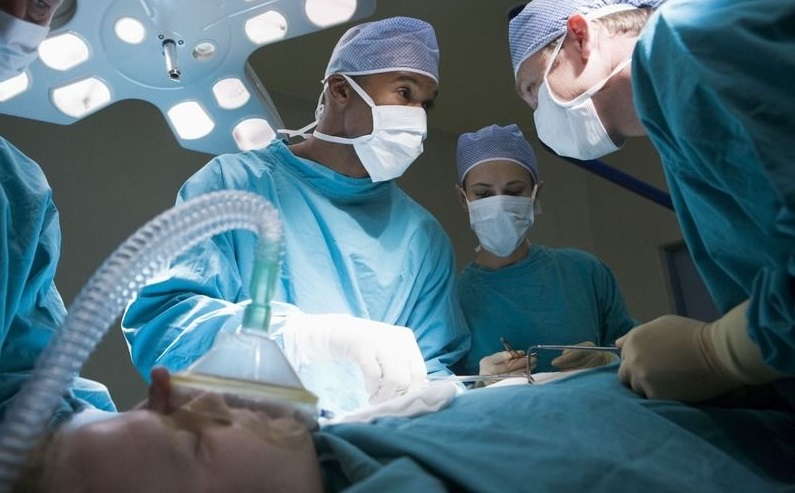背景:创伤修复是一个依赖于营养供给的复杂过程。在受试对象中同时使用β-羟基β-丁酸甲酯、精氨酸及谷氨酰胺时,发现胶原沉积有所增加。然而,目前尚没有关于这种氨基酸混合物对伤口二期愈合影响的研究。本研究旨在调查补充以上3种氨基酸对开放伤口二期愈合的影响,以健康动物作为实验对象。
材料与方法:将12只大鼠分为对照组和治疗组。预先在每只动物上制造2个2cm×1cm的皮肤全层缺损。两组大鼠均给予每天每100g体重含蛋白质1.2g的饮食。此外,治疗组每天给予左旋精氨酸200mg/kg、左旋谷氨酰胺200mg/kg以及β-羟基β-丁酸甲酯40mg/kg。每2天测1次伤口的大小。在第10天,取组织样本进行组织病理学评估和羟脯氨酸测定。
结果:两组伤口平均大小差异无统计学意义(P>0.05)。两组之间的组织病理学愈合参数(表皮新生、肉芽组织、胶原沉积、炎性细胞聚集、新生血管、组织羟脯氨酸浓度)差异也无统计学意义(P=1.00、1.00、0.455、0.455、0.242、0.240)。
结论:大鼠饮食中补充精氨酸、谷氨酰胺、β-羟基β-丁酸甲酯对促进伤口二期愈合无益,仍需进一步研究验证该观点。
JPEN J Parenter Enteral Nutr. 2015;39(5):591-7.
Pilot Experimental Study on the Effect of Arginine, Glutamine, and β-Hydroxy β-Methylbutyrate on Secondary Wound Healing.
Bozkirli BO, Gündogdu RH, Ersoy E, Lortlar N, Yildirim Z, Temel H, Oduncu M, Karakaya J.
Ankara Training and Research Hospital, Ankara, Turkey.
Ankara Atatürk Training and Research Hospital, Ankara, Turkey.
Boston University, Boston, Massachusetts, USA.
Etimesgut Public Health Laboratory, Ankara, Turkey.
Gemerek State Hospital, Sivas, Turkey.
Siverek State Hospital, Sanliurfa, Turkey.
Hacettepe University, Ankara, Turkey.
BACKGROUND: Wound healing is a complex process, dependent on available nutrition substrates. When used together with β-hydroxy β-methylbutyrate, arginine and glutamine have been shown to increase collagen deposition in human subjects. However, there are no experimental investigations on the influence of this amino acid mixture with regard to secondary wound healing. The aim of this study is to investigate the effects of the supplementation of these 3 amino acids on the healing of open wounds in otherwise healthy animals.
MATERIALS AND METHODS: Twelve rats were divided into control and treatment groups. Two 2-cm × 1-cm full-thickness skin defects were prepared on each subject. The rats in both groups received a diet containing 1.2 g of protein per 100 g of body weight per day. The treatment group, in addition, received 200 mg/kg L-arginine, 200 mg/kg L-glutamine, and 40 mg/kg β-hydroxy β-methylbutyrate every day. Wound sizes were measured every 2 days. On the 10th day, tissue samples were taken for histopathologic evaluation and also for the measurement of hydroxyproline concentrations.
RESULTS: There was no statistically significant difference between mean wound sizes for the 2 groups (P > .05). There was also no statistically significant difference between the groups with regard to histological healing parameters (reepithelialization [P = 1.00], granulation tissue [P = 1.00], collagen accumulation [P = .455], inflammatory cell accumulation [P = .455], angiogenesis [P = .242]) or tissue hydroxyproline concentrations (P = .240).
CONCLUSION: Diet supplemented with arginine, glutamine, and β-hydroxy β-methylbutyrate is not beneficial in enhancing secondary healing of open wounds in rats. Further research regarding this topic is warranted.
KEYWORDS: amino acids; arginine; glutamine; immunonutrition; wound healing; β-hydroxy β-methylbutyrate
PMID: 24463351
DOI: 10.1177/0148607113520433


全部评论(0)